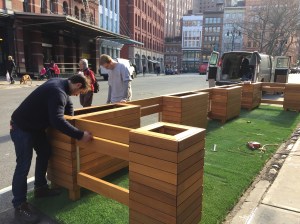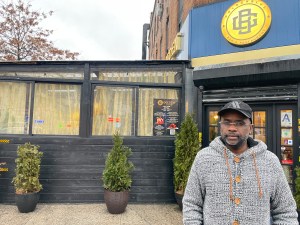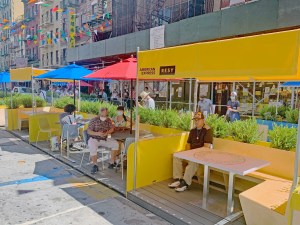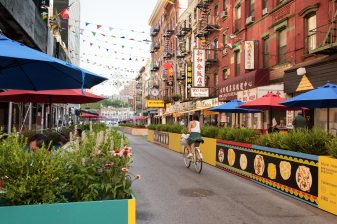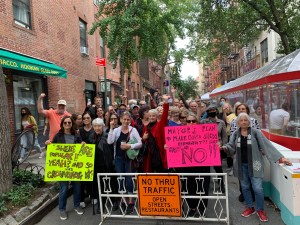GREEN CURBS: Open Restaurant Supporters Want Some ‘Parking’ Spots for Parklets
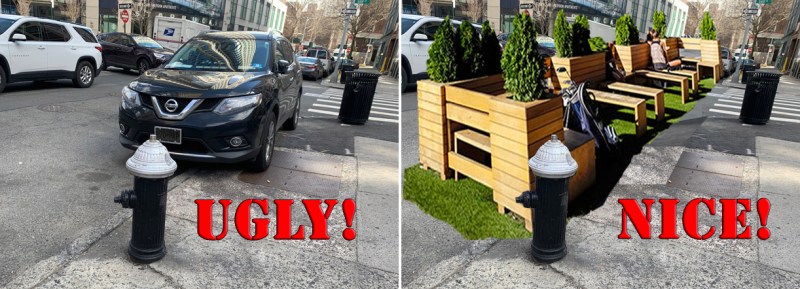
Every plate needs a little green on it.
A permanent outdoor dining program should come with a side of parks, a group of experts argues in a new report outlining the future of the program — which is currently being debated in the City Council and is under fire from opponents who say that some outdoor dining areas have been abandoned and dirty while other areas have too many sheds.
One solution is to use curbside space for other uses beyond restaurants and parking, says the Alfresco NYC Coalition, calling a community “parklet” option one way to “democratize” the curb.
“A ‘Community Parklet’ program … enables merchants or organized groups to tap into the Open Restaurant program and its legal infrastructure, giving new mixed-use space to programs that benefit their communities,” the researchers from the Regional Plan Association, the Tri-State Transportation Campaign and the Design Trust for Public Space wrote in The Future of Outdoor Dining in New York City.
Community parklets could be such things as simple street seating or parking space-sized event sites for nonprofits or libraries that want to bring programming to a street, and could be implemented as seamlessly as open streets or open restaurants are at the moment.
“There’s a holistic menu of ways to use the curb lane to benefit the community and provide that same opportunity that we’re providing for businesses to established organizations or organized community groups,” said Regional Plan Association New York Director Maulin Mehta. “Open streets was offered to groups that were able to mobilize and get together and actually activate the street. [This would be] on a much smaller scale.”
Mehta said that during the City Council’s lone hearing on the outdoor dining program, there was support for using the curb for more than just dining, something that advocates have been calling for as the city has embraced outdoor dining but has still not found a sweet spot between full open streets and smaller curb activations.
“During the hearing on open restaurants there seemed to be a lot of support for this idea that we should provide opportunities for community members to figure out different uses for these curbside spaces. So I think this helps solve the problem where you have a community board actively fighting against a concentrations of restaurants that there’s a way to say, ‘OK, here are the different types of options for the parking lane,'” he said.
The key to the green space recommendation, of course, is that the permanent outdoor dining program be overseen by the Department of Transportation — which Mayor Adams favors — as opposed to the the Department of Consumer and Worker Protection, which the Council bill seeks. The consumer protection agency formerly oversaw sidewalk cafes, but is not involved in streetscape improvements as is the DOT.
“For us, it’s a no-brainer to put it under DOT so that we can push the program to be a little more holistic, and start thinking about these other opportunities for the curb,” said Mehta. “If we end up seeing the program fall under DWCP, you’re going to lose the opportunity to evolve it.”
Council Member Marjorie Velazquez (D-Bronx), who is spearheading the Council bill through the legislative sausage grinder, has declined to comment as the process is ongoing.
